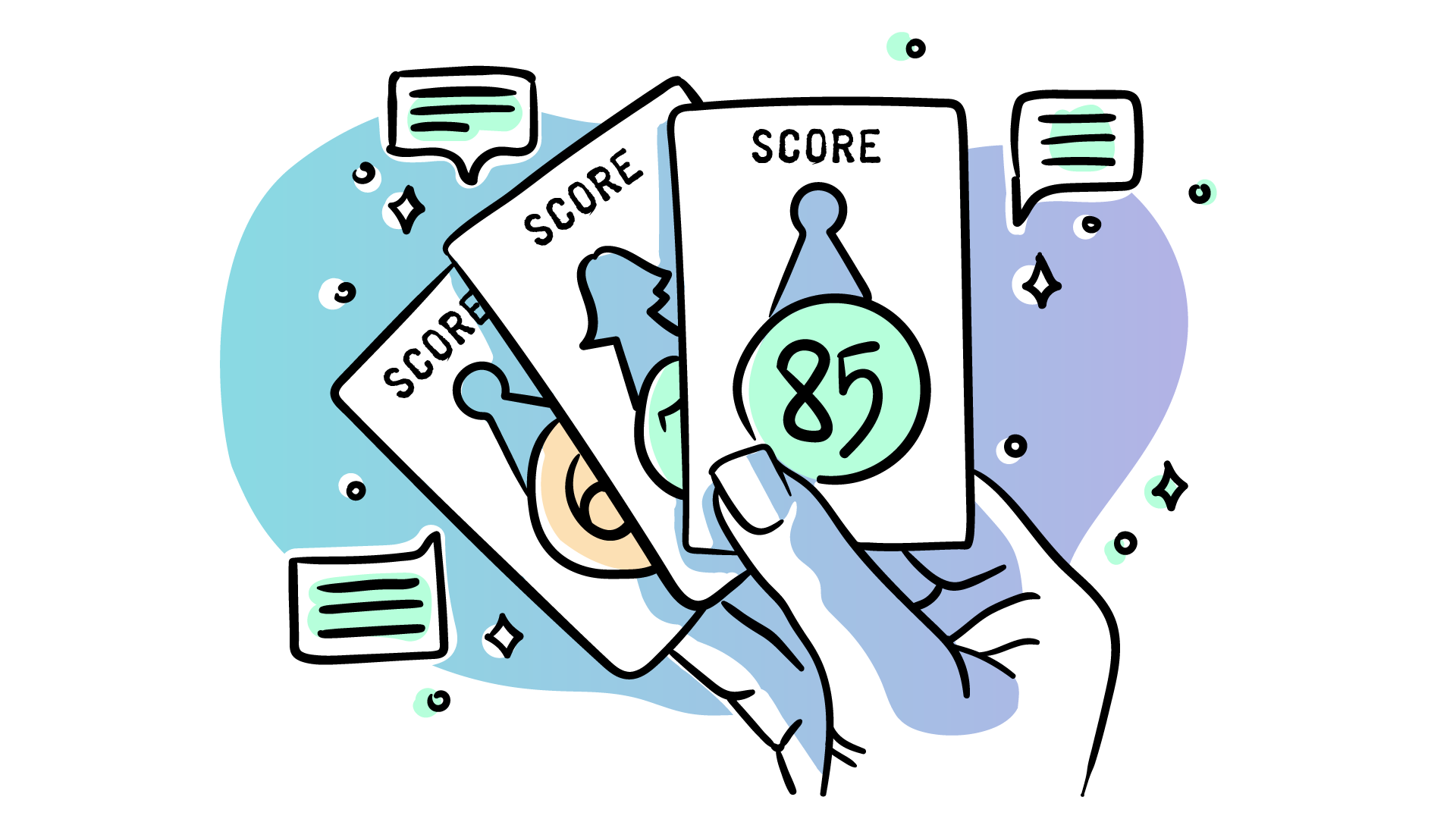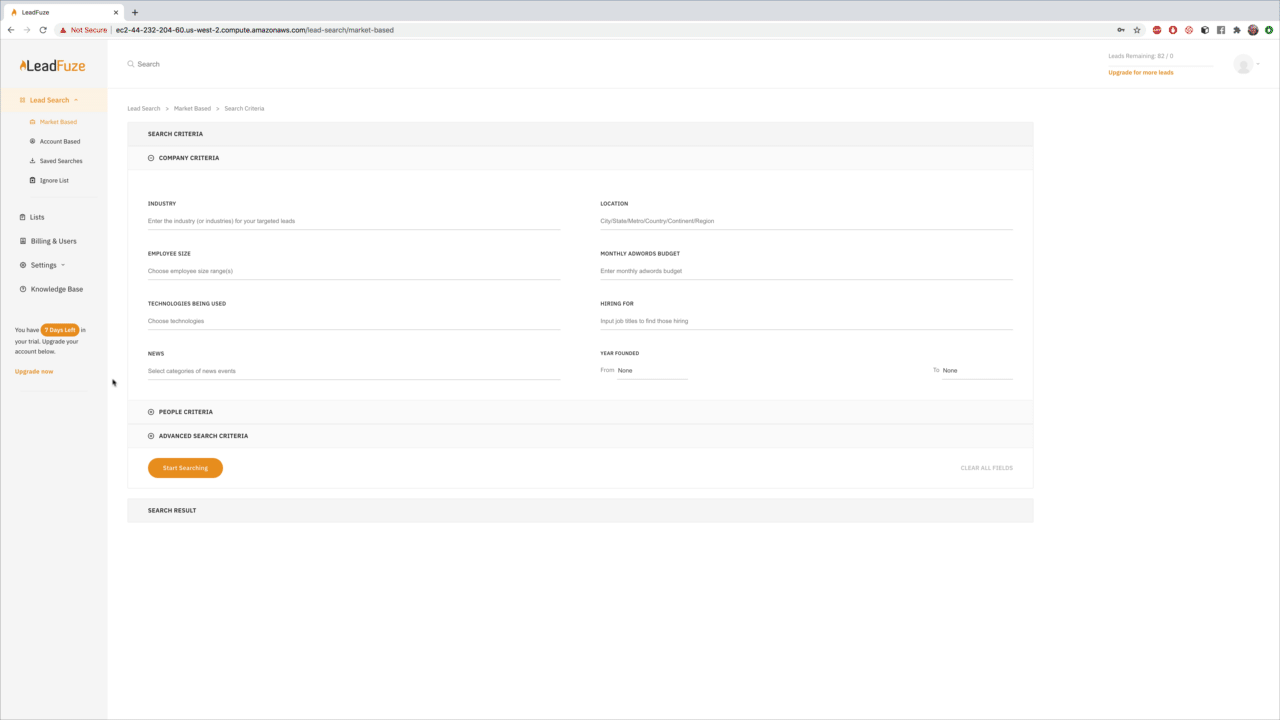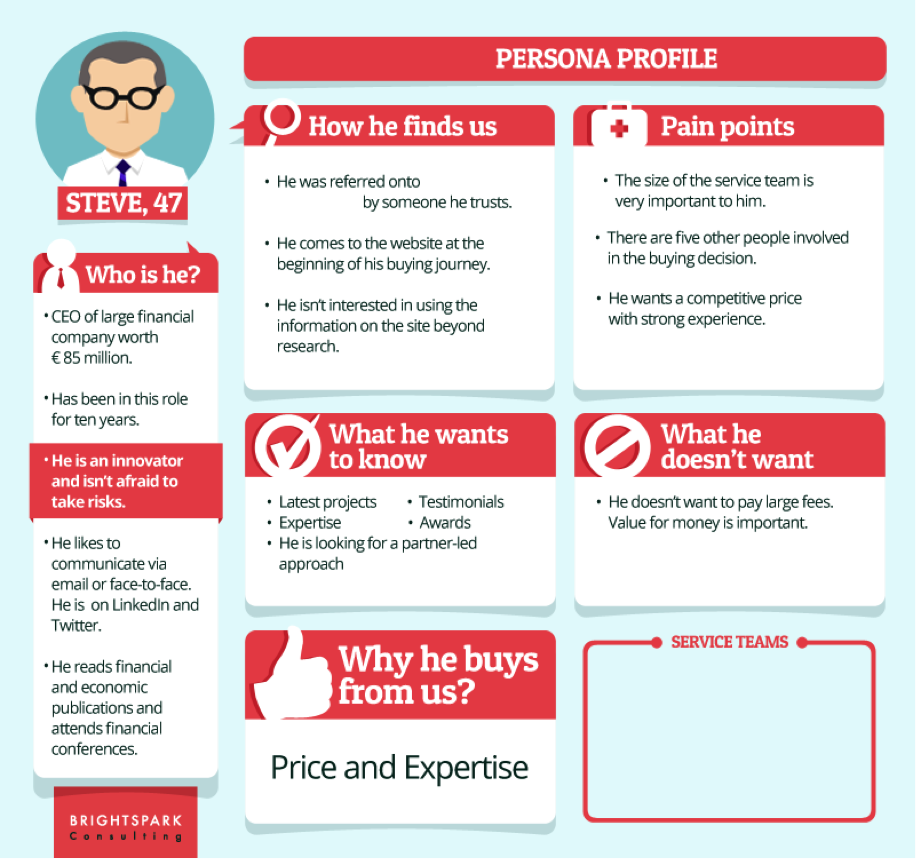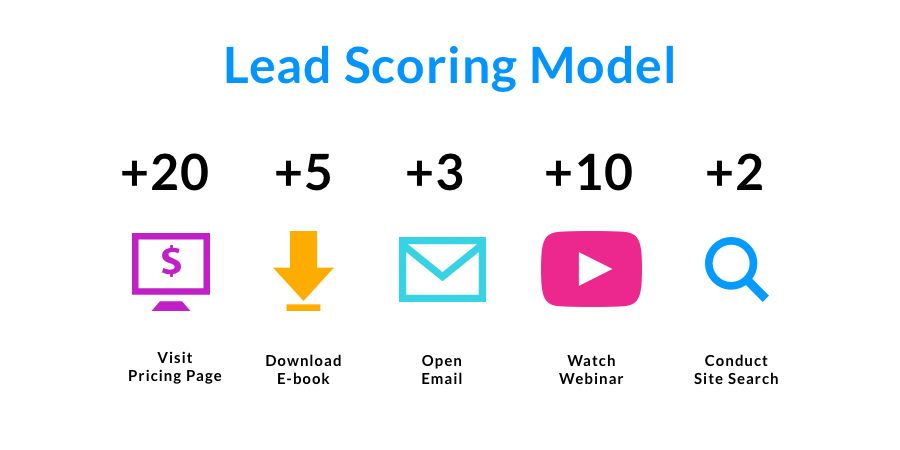What Is Lead Scoring?
Lead scoring is a way of ranking leads to determine which ones are more likely to become customers. It’s usually based on the data you have collected about your lead over time and can take a variety of different forms, depending on how much information you collect from that person.
A reputable company with an effective marketing strategy will be able to accurately assess if someone is a good lead or not, even if they don’t have all the information.
It is based on past behavior and leads with similar behaviors are scored similarly to one another. It’s important that this data is accurate, so your scores reflect reality rather than assumptions about what will happen in future interactions – otherwise, you risk wasting time nurturing bad leads when they could be spent on better leads.
(Image Source: Outfunnel)
7 Reasons Why Lead Scoring is Beneficial for Your Business
Lead scoring is vital for any business and here are some reasons why:
1. Reduce acquisition costs
Lead scoring helps better target your marketing efforts, so you can get more conversions and spend less on acquisition. It also allows businesses to see their most valuable customers quickly with a higher ROI on nurturing campaigns for these top-tier prospects.
It helps you focus on your most valuable customers and stop spending money on people who will never convert.
According to Aberdeen Research, brands or companies that get lead scoring right have a 192% higher average lead qualification rate than those that do not.
2. Understand lead qualification level
With lead scoring, your reps will develop a full understanding of the different lead qualification levels. They will be able to tailor their conversations accordingly, and with the help of lead scoring software that tracks different actions taken by leads.
It’s a more positive way for sales reps to approach potential customers because they can know what type of customer is on the other end before even making contact. It also helps them achieve success in every single interaction, which increases their chances of growing your business.
3. Differentiate between MQLs and SQLs
The most common mistake that many companies make when they have their leads scored is to put the same values on both MQLs and SQLs, which can result in wasted marketing spend.
It’s important to know how much a lead is worth to the company so that you can determine how much time and resources should be spent on nurturing them.
If SQL has more potential for ROI than an MQL, they’re going to take priority in your marketing strategy. If not, it may make sense to spend less time on them or even pass them up altogether.
The way you should differentiate between the monetary value of an MQL and an SQL is by looking at their “interest score.”
In the example below, A has a higher interest score than B. This means that it’s worth more to nurture A because they’re showing signs of being interested in your product or service.
(Image Source: Instapage)
4. Understand your leads’ behavior
Understanding your lead’s behavior is the key to lead nurturing. Knowing what type of content they respond well to will help you decide how best to reach out and engage with them.
This may be an article, a video, or even a call-to-action that’s tailored specifically for these types of people. The more personalized it is, the better.
5. Segment your leads
Segmenting your leads is another key to successful lead nurturing. This means that you can create a series of personalized campaigns for different types of people who are interested in your product or service, and they’ll be more likely to respond because it’s targeted just for them!
6. Align sales and marketing
Lead scoring is a great way to align your sales and marketing teams because they can both use the same system to communicate with prospects.
The marketing team will be able to send personalized content and relevant offers, while sales have a better idea of what’s working so that it can adjust its strategy accordingly. This leads to an increase in revenue across your organization!
7. Increase conversions and revenue
By giving prospects the right message at the right time, lead scoring can help you to increase conversions and revenue.
Leads will be more likely to convert if they’re getting what they want when they need it because their needs are being met at every stage of the process. This leads to higher sales numbers!
7 Lead Scoring Criteria to Use
Here are some criteria you can use for your lead scoring process:
1. Contact information
The amount of information that is collected from a potential customer will determine the lead score they receive.
Leads that have entered their contact information and given detailed personal information are more valuable to your business than leads without these details.
2. Organization size/type
Give points to the organization size and type that you’d like to close more deals with.
For example, if you’re a lawyer and want to target those with large organizations or high-profile businesses, give them more points.
3. Location
If someone falls outside the area you serve, give them a lower score.
For example, if you’re an IT company and someone lives in Florida instead of New York, don’t expect to close the deal with that lead because they won’t be able to use your services even though they are interested.
(Image Source: 9to5Mac)
4. Pages visited
What a visitor does on your website can be just as important to your lead scoring.
Some visitors are more valuable than others if they visit certain pages, so assigning a value to the page viewed is a good idea.
5. Frequency
The frequency of the lead’s interaction with your company can affect your lead scoring.
Someone who visits regularly or has made recent purchases is more likely to convert than someone with only one visit and no purchase history.
6. Email activity
If someone has opted in to receive email communications, that person is more likely to convert.
Lead scoring can track how many emails are sent, which will impact the lead’s score and the likelihood of converting into a customer.
The frequency of email activity should be considered when assigning value points for this metric; someone who has opted in but doesn’t receive any communications might not be worth as much as someone who does.
7. Lead source
Leads come from different sources, such as social media, organic search, partner referrals, and direct website traffic.
The lead source can be an important factor in the scoring process because a single touchpoint could make all the difference about converting leads into customers.
For example, if someone visits your site through Google but never returns to complete a purchase online or visit again, the quality of that lead will be lower than someone who found your business through a referral.
Do you need more leads? You can use LeadFuze to generate verified leads.
LeadFuze is a lead generation company that specializes in generating verified leads for businesses. With its proprietary technology, it can help your business generate the right type of leads to meet your needs. It has helped thousands of clients get their sales and marketing efforts off the ground with LeadFuze’s proven process.
You don’t have time to waste on unqualified prospects or people who are just not interested in what you’re selling. That’s why LeadFuze has developed an exclusive system that will only provide you with qualified, pre-screened potential customers who want what you offer! Let it do all the work so you can focus on growing your business!
Sign up for a free trial of LeadFuze!
4 Types of Lead Scoring
There are 4 types of lead scoring you can choose from depending on the type of company you have. Here’s a quick breakdown of those.
1. Activity-based lead scoring
This type of scoring is most commonly used for B2C companies. Activity-based lead scoring assigns different values to activities on your site, such as page views or time spent on the page, and then uses those to determine how engaged a visitor might be with your product/service or company.
2. Profile-based lead scoring
Profile-based lead scoring is most commonly used for B2B companies and is based on data entered about a visitor’s job title, industry, or geolocation. The idea here is that if someone enters this sort of information in the first place, they’re more likely to be qualified as a lead than those who haven’t provided any detail.
(Image Source: Marketing Insider Group)
3. Point-based lead scoring
Point-based lead scoring assigns a points value to different actions, such as downloading a white paper or subscribing to your email list. Again, the idea here is that someone who has taken these actions has shown a higher level of interest in your company and products/services.
4. Predictive lead scoring
Predictive lead scoring is based on data about an individual’s behavior. This might be their browsing activity or a product they’ve viewed but not purchased.
The predictive lead score then reflects how likely it is that this individual will convert into a customer and the timeframe within which this conversion could happen.
How to Set up a Lead Scoring Process in 6 Steps
Not sure where to start on lead scoring? Here are simple steps you can follow:
Step 1: Define your ideal lead and their behavior
You need to know first what your ideal buyer profile looks like, and what action they take that makes them an ideal lead.
What are the specific behaviors of people who convert? How can you tell if someone is ready to buy? What level of interest do you need for a visitor to be considered a lead, versus just an anonymous contact?
To answer these questions, you need a very clear idea of the type of person who is most likely to buy from your company.
Step 2: Determine your lead scoring criteria
Use the information you collected in step 1 to define your scoring system. The most important factor is likely to be the point at which a lead converts, meaning when they take an action that shows some interest in your product or service.
How do you define “interest?” It’s up to you! The type of scoring system will depend on what makes sense for your organization and industry. You can have a different scoring system for each lead type.
Some considerations when defining your scoring criteria:
- What are the thresholds at which a person becomes qualified as a Lead?
- How many points should be awarded per activity, and how do you calculate them? For example, is it one point per click or five points if they fill out an online form?
- What should be the lowest value of a lead to qualify as qualified for your organization, and what can trigger them to reach this status?
- How often do you want leads to reach qualified status to have an effective qualification process? For example, if it’s too difficult or takes too long then people might give up on the process.
Step 3: Distribute points
Assign points to every criteria or activity your leads perform. Some activities might be worth more points.
Distributing points accurately might seem like a daunting task, but it’s important to do so to set up the right payoffs for your leads.
Step 4: Establish a threshold for sales-ready leads
A lead becomes a sales-ready lead when they reach your threshold.
The qualified status is different for every business, so it’s important to think about what would make the most sense in yours before setting up the thresholds. Once you have that figured out then this step should be easy and straightforward.
Step 5: Launch your scoring system
Now that you’ve distributed points to every criteria or activity, it’s time to turn your new lead scoring system on.
Step 6: Re-validate your scoring system
Be sure to re-validate your scoring system every quarter or so. If you are noticing that there is a pattern of points being given in certain categories, then it’s possible that this system might not be entirely accurate for the new lead generation strategies and tactics you’ve implemented since launching it originally.
It is important to review regularly, but also ensure that you are doing so with the intent of continuous improvement.
How to Calculate a Lead Score
Now, that your lead scoring system is up and running, it’s time to calculate lead score. Here’s how you can do it:
Calculate the total points for each criterion or activity
For example, if a lead is marked as being contacted before submitting their information (e.g., received an email that says “please contact us before you submit”), then they get two points towards this category in addition to the five points for filling out their form.
Leads that are contacted after submitting their information receive no points for this category and five points towards the “contacted” criterion.
(Image Source: Cyberclick)
Calculate a lead’s total score
Add up all of his or her individual scores from each criterion (ties broken with the lowest value).
This will give you a weighted average to use for lead scoring.
Categorize the scores as they relate to your business needs.
The “best” scores are usually those that lead to the highest quality of leads for your company.
To do this, you’ll have to determine what percentage of good leads fall into each score range and then prioritize accordingly.
For example, if 60% of great leads will come from a minimum total score of 800 but only 15% of poor leads will come from a minimum score of 800, you’ll want to make sure that your lead scoring system is weighted heavily in favor of the higher scores when it comes time for assigning points.
If you want, you can use a lead scoring calculator to make things easier for you.
But, what is a lead scoring calculator?
A lead scoring calculator is a tool that is designed specifically to evaluate and compare multiple versions of a lead scoring system to determine which one gives your organization the maximum return on their sales process investment – without being too heavy-handed.
4 Lead Scoring Examples
How you score leads depends on you — your call! But if you need a guide on how you’re going to start, here are some lead scoring lead examples you can copy:
1. Online behavior
How do you judge someone’s actions online? What are the best metrics for that? Click rates, comment rate, and time on site (how long they’re engaged) are all good metrics to use.
You can assign different lead scores for various actions such as:
- Commenting on a post: 80 points
- Clicking “Like” on Facebook: 120 points
- Viewing an image gallery for more than five minutes with no other activity (i.e., scrolling): 240 points
- Creating content and/or participating in discussions around the community or forum topics: 500 points
- Actively submitting blog comments: 2500 points
2. Personal information
Personal information can be divided into two categories: demographic information and organizational information.
Demographic information includes age, gender, location, and education level. Demographics are often used in lead scoring because they are easy to collect (they’re required fields for many websites) and can be an indicator of the potential value of a prospect if you know how to interpret them correctly.
Organizational information is typically collected by organizations when a prospect creates an account. This information includes things like name, organization, and email address.
For instance, points can be rewarded according to the personal information they provided to your company:
- If they identify as female, give them an extra point (this depends on your brand).
- If they are in your target demographic of 18 – 24 years old, give them two points.
- Give a prospect who has never purchased from you before one more point than someone who is on their third purchase.
If the prospects have not provided this information, it is possible to estimate demographic information based on the IP address they are connecting from and their device.
3. Email engagement
How does one judge someone’s email engagement? How do you know if they’re opening it, how long they stay on the page or in your emails and what links are clicked?
An example of a lead score for email would be:
- Opened an email – 70 points
- Visited landing page after clicking a link from email – 150 points
- Subscribed to the newsletter after clicking a link from email – 300 points
- Opened an email – 70 points.
- Visited landing page after clicking a link from an email and subscribed to newsletter – 450 points.
4. B2B scoring
Some companies score leads based on an individual’s job title, department, or role in a company.
Here’s how you’ll reward points according to those criteria mentioned:
- Director of Sales = 100 pts
- Regional Manager (Sales) – 60 pts.
- New Business Development Department VP = 180 points
- Marketing Communication Specialist – 30 points.
Conclusion
Lead scoring is a way to measure the level of engagement a lead has with your company. By knowing what actions they are taking, you can assess their potential and give them a priority for sales outreach.
The type of leads that each organization should be prioritizing will vary depending on the business’ goals and objectives, as well as its stage in the sales process.
Want to help contribute to future articles? Have data-backed and tactical advice to share? I’d love to hear from you!
We have over 60,000 monthly readers that would love to see it! Contact us and let's discuss your ideas!
